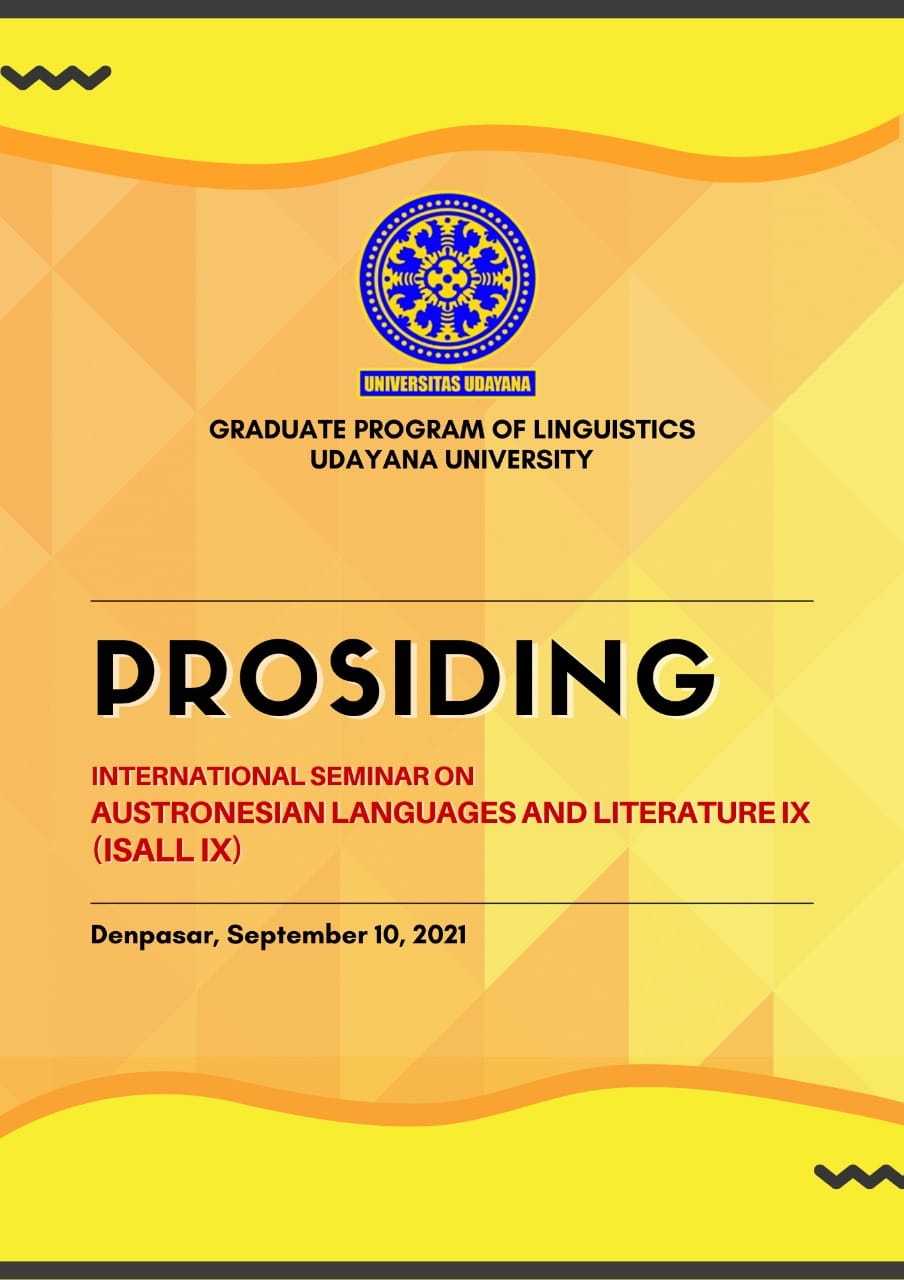Action Verb Nosi `Interesting` Bima Language: The Study Of Natural Semantic Metalanguage (NSM)
Abstract
The Bima language verb is one of the main word classes that is central and complex, this is evidenced from the verbs that are always present in speech, are determinants of the presence of arguments and have the authority to determine the semantic roles that exist in each accompanying argument. The purpose of this study was to determine the mapping and explication of the action verb 'Bring'. The method used is qualitative, the data sources consist of oral data, written data collected from the Bima language story book and language intuition, language data taken from key informants. The technique used is interview and literature study. The method of collecting data is the proficient method, namely the agih method with the application of transformation and insertion techniques used to express the original meaning contained in BBM. The default meaning used to determine the semantic structure of VBBm by explication or paraphrase technique. The lexicon in this article is mapped against: entities, processes, tools and outcomes. The results of the research show that the Bima language action verb 'Interesting' has generic and specific features, findings in the field that lexicon variants are distinguished on the basis of the position of X (agent) who does something to Y (object). The person doing this is mapped to X doing something to something, something happening to Y and Y moving
References
Alwi, Hasan, 2003. Tata Bahasa Baku Bahasa Indonesia. Jakarta: Balai Pustaka.
Bungin, Burhan. 2003. Analisis Data penelitian kualitatif, pemahaman filosofis dan metodologis kearah penguasaan model aplikasi. Jakarta: Raja Grafindo Persada.
Foley dan Van Valin Jr. 1984. Functional Syntax and Universal Grammar. Cambridge: Cambridge University Press.
Frawley, William. 1992. Linguistic Semantics. New Jersey: Lawrence Erlbaum Associates.
Givon, Talmy. 1975. "Cause and control: On The Semantics of Interpersonal Manipulation", Kimball (ed.) syntax and Semantics, 4:59-89. New York: Academic Press.
Goddard, Cliff dan Anna Wierzbicka. 2014. Words and Meaning Lexical Semantics across Domains, Languages & Cultures. Oxford: Oxford University Press.
Leech, Geoffrey. 1981. Semantics. England: Penguin Books.
Merriam, Sharan. B. 2009. Qualitative Research: A Guide to Design and Implementation. San Francisco: Jossy-Bass.
Spradley, James P. 1980. Participant Obsevation. USA: Holt Rinehart and Winston.
Sugiyono. 2018. “Metode Penelitian Kuantitatif, Kualitatif, dan R&D”. Bandung: Aflabeta.
Tampubolon, D.P., Abubakar, Sitorus, M. 1979. Tipe-Tipe Semantik Verba Bahasa Indonesia Kontemporer. Jakarta: Pusat Pembinaan dan Pengembangan Bahasa.
Weinreich, Uriel.1998. Languages In Contact: Findings And Problems. New york: The Hague,Mouton.
Wierbicka, A. 1996d. Semantics: Primes and Universals. Oxford: Oxford University Press.


